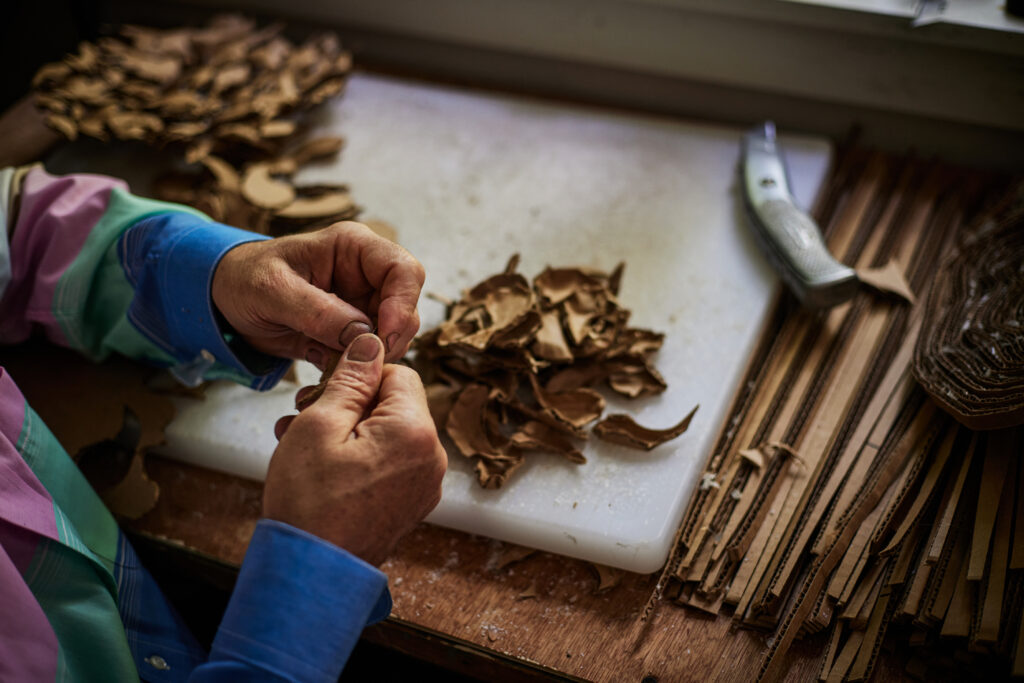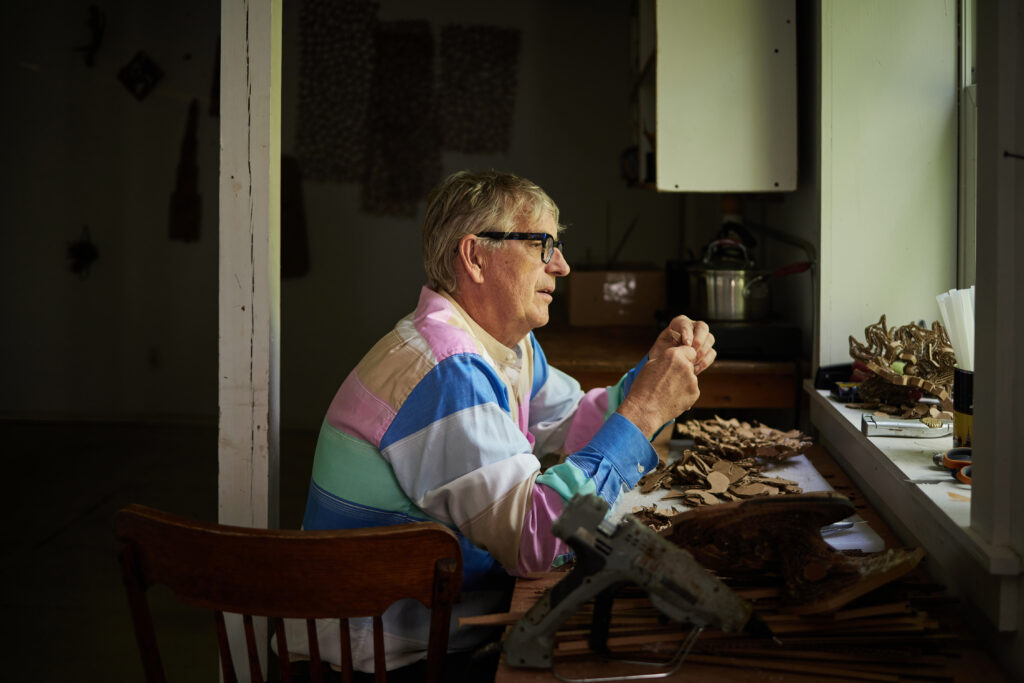Henry Klimowicz Creates Masterpieces from the Humblest of Materials
By ML Ball
Photos by Ryan Lavine
Describing Henry Klimowicz’s art is no easy task. It’s swirly and flowing and erupting with movement, like a flamenco dancer’s skirts. It’s still and contemplative—a tatami mat cradling leafy vines. It’s hairy and knotted, but also rigid like a cornstalk jungle. It’s stacked blocks of wood. It’s a huge, round, six-foot-wide glimpse under a microscope, and at the same time, a telescopic gaze into space. It’s everything, everywhere, all at once. And it’s made of cardboard.
Wait, cardboard?
“I’ve worked sculpturally in cardboard since 1986, so almost 40 years,” says Klimowicz. “I find it, I never buy it. It’s all recycled. I find it behind grocery stores, people’s leftover delivery boxes.”

Given all the materials out there to sculpt with, why cardboard? “I was staying in Brooklyn with a friend I’d met at Skowhegan [School of Art] and I had just a little teeny room, the size of a single futon,” he recalls. “And I thought, ‘Well, how can I still be a sculptor? I could get a glue gun and a utility knife and I can make things out of cardboard.’ And that’s how it started.”
In the ensuing 37 plus years, Klimowicz’s work has been featured in group exhibits and solo installations across the United States. He’s been a fellow at several of the nation’s most prestigious art colonies, including Millay Arts, Yaddo, MacDowell, Ucross Foundation, and Vermont Studio Center. And he’s the founder and director of the Re Institute, a 2,000-square-foot exhibition space in the hay loft of a 1960s cow barn, now his home, a few miles outside of Millerton.
Klimowicz intentionally chooses cardboard as his preferred medium not only for its physical properties but for the societal statement it makes. “There is a cultural bias against cardboard,” he explains. “The humbleness of the material means that the viewer has to either like the piece or dislike it solely on their impression of it, not on what it is made of. The deeper meaning is that, if you can make something beautiful out of humble material, then everything, and everyone, is capable of being transformed. The humblest of us can be beautiful.”
Even from a young age, Klimowicz realized he had a gift, an artist’s propensity for seeing creative possibilities. He grew up in a suburb of Milwaukee, Wisconsin, called Wauwatosa. His father is an amateur classical clarinetist, still playing at age 90, and his maternal grandmother was Molly Nye Tobey, a nationally-recognized rug hooker. While in elementary school, he attended a summer arts program run by a woman named Irma Jo Dobbs. “One of the things she always promoted was piggybacking,” Klimowicz says. “It was okay to copy. Which is completely true. There’s no art that’s ever been made that wasn’t on the back of someone else’s. That was a very early kind of permission to think about other people’s work.”

Klimowicz went on to earn a BFA from the University of Wisconsin-Milwaukee in 1984, then spent that summer at Skowhegan School of Art. An MFA followed from Tyler School of Art in Philadelphia. He eventually moved to New York, then 25 years ago, settled outside of Millerton. “This is a very open community,” he says. “I have some close friends who are economically in the top one percent, but they’re open to meeting the community around them, not like in the city.”
Klimowicz says that much of his career with cardboard has been spent seeing how many different permutations there can be of this humble material. “At this point, I’m pretty sure that there’s really no end.” Aren’t we glad. —henryklimowicz.com

